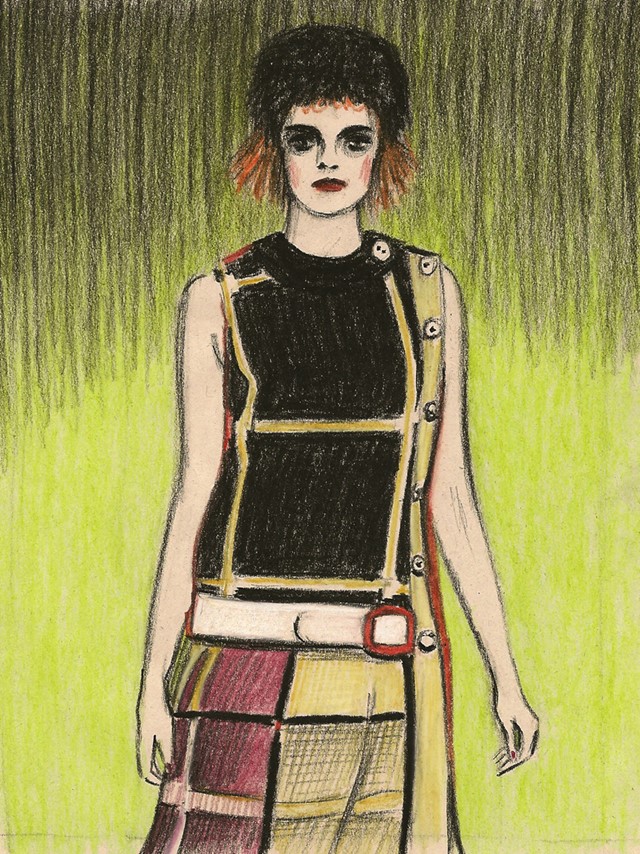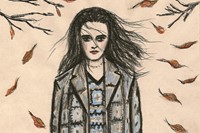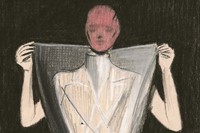When is a cardigan not a cardigan? When it’s a safari jacket, of course! We’ll come back to that later, but suffice it to say designers have got tricksy for autumn/winter 2011 and nothing is quite what it seems.
When is a cardigan not a cardigan? When it’s a safari jacket, of course! We’ll come back to that later, but suffice it to say designers have got tricksy for autumn/winter 2011 and nothing is quite what it seems.
Christopher Kane opened a textured and tactile show in London last month with several crocheted separates: skirts, jumpers, vests, blazers. But only half of them were actually crocheted; the rest were made from leather which was then printed with crocheted squares, causing the audience to sit on their hands to refrain from patting here and stroking there to discern which was the ‘real’ article. Henry Holland was at it too, with jumpsuits and retro trenchcoats printed with – but not constructed from - bold, colourful squares of provincial granny crochet.
Meanwhile at Prada there were blown-up check prints, warped and zoomed, on dresses made from fabrics to which they were not integral – that is, they were not woven into the material. And at Daks, traditional lining fabrics became the outer layers of the coats they usually cling to the underbellies of.
It’s a questioning of usage, identity, dimension and boundaries that fashion has long been concerned with. In the perennial search for the new, the bizarre, the exotic and the attractive – with the constant ‘updating’ of classics – how long does it take before the updates morph into a new and separate genre altogether?
If one defines crochet as a way of creating fabric by way of yarn and a special hook, rather than by the visual pattern this process creates, then Kane’s version and Holland’s too cease to even qualify as such. But what the eye recognises to be true, the mind is unwilling to let go of, even as the leather or gabardine crinkles under the fingers.
It’s a technique known as trompe l’oeil, and it has long been a favourite with fashion’s great tricksters. Martin Margiela printed the aforementioned cardigan with a photographic print of a safari jacket for his spring/summer 1996 collection, raising the question of form and function in a new and entirely confusing way. He also offered jersey leggings overlaid with the phantom image of jeans, from their rivets and pockets down to the zip fly, a look he reprised for this twentieth anniversary spring/summer 2009 show on fake denim jackets and tailor's dummies mimeographed onto silken tunics. Margiela has also made dresses inside out, with linings outside and external fascias sitting next to the wearer's body. Which garment takes precedence: the one physically present or visually attributed? Do we care?
As an optical illusion used in art and architecture, trompe l’oeil feeds into a rhetoric of uncertainty: uncannily realistic windows painted onto blank walls; entire and undulating vistas rendered on a dead-end. In fashion, it’s a method of shaking up and unsettling: something Kane and Prada are famed for, and something that autumn collections – bound by the need to provide generic and pragmatic basics, such as warm coats and workaday dresses – often attempt.
Whether such strict categorisation even matters, of course, is another question. If these pieces fulfil their destiny – that is, to look good in windows, and on pages and bodies – then who on earth cares whether they are made of crochet or fauxchet? The fashion pedants, that’s who. Why else have you read this far?
Zoë Taylor has appeared in Le Gun, Bare Bones, Ambit and Dazed & Confused. She is currently working on her third graphic novella and an exhibition.
Harriet Walker is a fashion writer at The Independent. Her book Less is More: Minimalism in Fashion is out now, published by Merrell.


